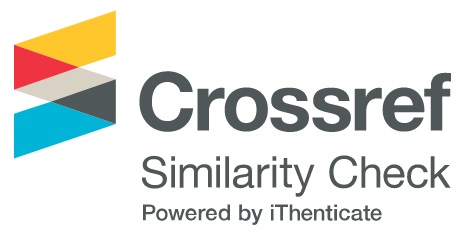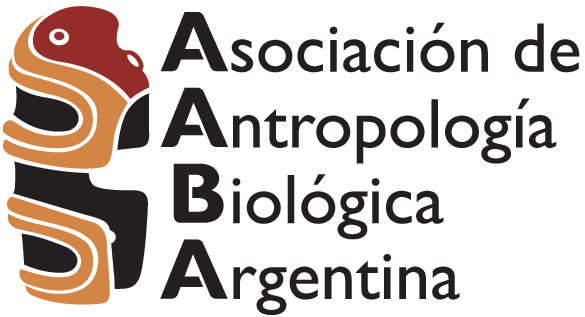Morphological diversity of the mandible of capuchin monkeys: a morphometric analysis
DOI:
https://doi.org/10.17139/raab.2018.0020.02.07Keywords:
geometric morphometrics, South America, Cebus-Sapajus, systematicsAbstract
The diversification of platyrrhines on a macroevolutionary scale has been systematically studied in recent years. However, the origin of the phenotypic and taxonomic diversity observed at small phylogenetic scales, e.g., within genera, has been less studied. In this context, the diversity of capuchin monkeys has recently been discussed. Previous works recognized a single genus and mainly four species. In contrast, recent studies, using morphological and molecular data, have proposed splitting the clade into two genera (Cebus and Sapajus) and twelve species. The objective of this work is to explore mandibular morphometric variation of capuchin monkey species to discuss this problem. The results obtained-using computed micro-tomographies, 3D geometric morphometric techniques, and comparative phylogenetic methods-show that all the species studied overlap along the main axis of shape variation, and that the differentiation among the species recently assigned to the genera Cebus and Sapajus is related to non-allometric shape changes. Many of the characteristics assigned to the recently proposed Sapajus genus, particularly, the robustness of the mandible, are observed in male individuals of species of both genera. These results suggest that the morphological characteristics recently described as useful for differentiating the capuchin genera should be cautiously used as criteria for generating new systematic proposals.
Downloads
Metrics
References
Adams, D. C., Rohlf, F. J. y Slice, D. E. (2004). Geometrics morphometrics: ten years of progress following the ‘revolution’. Italian Journal of Zoology, 71, 5-16. doi: 10.1080/11250000409356545
Arístide, L., Soto, I. M., Mudry, M. D. y Nieves, M. (2014). Intra and interspecific variation in cranial morphology on the southernmost distributed Cebus (Platyrrhini, Primates) species. Journal of Mammalian Evolution, 21, 349-355. doi: 10.1007/s10914-013-9249-y
Aristide, L., dos Reis, S. F., Machado, A.C., Lima, I., Lopes, R. T. y Perez, S. I. (2015). Encephalization and diversification of the cranial base in platyrrhine primates. Journal of Human Evolution, 81, 29-40. doi: 10.1016/j.jhevol.2015.02.003
Aristide, L., dos Reis, S. F., Machado, A. C., Lima, I., Lopes. R. T. y Perez, S. I. (2016). Brain shape convergence in the adaptive radiation of New World Monkeys. Proceedings of the National Academy of Sciences USA, 113, 2158-2163. doi: 10.1073/pnas.1514473113
Blomberg, S. P., Garland Jr., T. e Ives, A.R. (2003). TeSting for phylogenetic signal in comparative data: behavioral traits are more labile. Evolution, 57, 717-745.
Drake, A. G. y Klingenberg, C. P. (2008). The pace of morphological change: historical transformation of skull shape in St Bernard dogs. Proceedings of the Royal Society B: Biological Sciences, 275, 71-76. doi: 10.1098/rspb.2007.1169
Drummond, A. J. y Rambaut, A. (2007). BEAST: Bayesian evolutionary analysis by sampling trees. BMC Evolutionary Biology, 7, 214. doi: 10.1186/1471-2148-7-214
Felsenstein, J. (1985). Phylogenies and the comparative method. American Naturalist, 125, 1-15.
Fleagle, J. G. (2013). Primate adaptation and evolution. San Diego, USA: Academic Press.
Klingenberg, C. P. (2011). MorphoJ: an integrated software package for geometric morphometrics. Molecular Ecology Resources, 11, 353-357. doi: 10.1111/j.1755-0998.2010.02924.x
Lima, M. G., Buckner, J. C., Aleixo, A., Martins, A. B., Boubli, J. P., Link, A., Farias, I. P., da Silva, M. N., Röhe, F., Queiroz, H., Chiou, K.L., Di Fiore, A., Alfaro, M. E. y Lynch Alfaro, J. W. (2017). Capuchin monkey biogeography: understanding Sapajus Pleistocene range expansion and the current sympatry between Cebus and Sapajus. Journal of Biogeography, 44, 810-820. doi: 10.1111/jbi.12945
Losos, J. B. y Mahler, D. L. (2010). Adaptive radiation: the interaction of ecological opportunity, adaptation, and speciation. En: Bell, M.A., Futuyma, D. J., Eanes, W.F. y Levinton, J.S., (Eds.). Evolution since Darwin: the first 150 years. (pp. 381-420). Sunderland, United Kingdom: Sinauer Associates.
Lynch Alfaro, J. W., Boubli, J. P., Olson, L. E., Di Fiore, A., Wilson, B., Gutierrez-Espeleta, G. A., Chiou, K. L., Schulte, M., Neitzel, S., Ross, V., Schwochow, D., Farias, I., Janson, C. y Alfaro, M. E. (2012a). Explosive Pleistocene range expansion leads to widespread Amazonian sympatry between robust and gracile capuchin monkeys. Journal of biogeography, 39, 272-288. doi: 10.1111/j.1365-2699.2011.02609.x
Lynch Alfaro, J. W., Silva Jr., J. S y Rylands, A. B. (2012b). How different are robust and gracile capuchin monkeys? An argument for the use of Sapajus and Cebus. American Journal of Primatology, 74, 273-286. doi: 10.1002/ajp.22007
Marroig, G. y Cheverud, J. M. (2001). A comparison of phenotypic variation and covariation patterns and the role of phylogeny, ecology and ontogeny during cranial evolution of New World monkeys. Evolution, 55, 2576-2600. doi: 10.1554/0014-3820(2001)055[2576:ACOPV A]2.0.CO;2
Mitteroecker, P. y Gunz, P. (2009). Advances in geometric morphometrics. Evolutionary Biology, 36, 235-247. doi: 10.1007/s11692-009-9055-x
Nova Delgado, M., Galbany, J., Górka, K. y Pérez-Pérez, A. (2015). Taxonomic implications of molar morphology variability in Capuchins. International Journal of Primatology, 36, 707-727. doi: 10.1007/s10764-015-9850-4
R Development Core Team. (2017). R: a language and environment for statistical computing. Vienna, Austria: R Foundation for Statistical Computing.
Rohlf, F. J. (1990). Rotational fit (Procrustes) methods. En: Rohlf, F. J. y Bookstein, F. L., (Eds.). Proceedings Michigan morphometrics workshop. Special publication n8 2. Museum of Zoology. (pp. 227-236). Michigan, USA: University of Michigan.
Rosenberger, A. L. (1992). Evolution of feeding niches in New World monkeys. American Journal of Physical Anthropology, 88, 525-562. doi: 10.1002/ajpa.1330880408
Rylands, A. B., Mittermeier, R. A. y Silva, J. S. (2012). Neotropical primates: taxonomy and recently described species and subspecies. International Zoo Yearbook, 46, 11-24. doi: 10.1111/j.1748-1090.2011.00152.x
Schluter, D. (2000). The ecology of adaptive radiation. Oxford, United Kingdom: Oxford University Press.
Silva, J. S, Jr. (2001). Especiacao nos macacos-prego e caiararas, genero Cebus Erxleben, 1777 (Primates, Cebidae). (Tesis doctoral). Universidade Federal do Rio de Janeiro. Rio de Janeiro.
Wiley, D. F., Amenta, N., Alcantara, D. A., Ghosh, D., Kil, Y. J., Delson, E., Harcourt-Smith, W., Rohlf, F. J., St. John, K., Hamann, B., Motani, R., Frost, S., Rosenberger, A. L., Tallman, L., Disotell, T. y O’Neill, R. (2005). Evolutionary morphing. En: Proceedings of the IEEE Visualization 2005 (VIS ‘05). Minneapolis, USA. p. 431-438.
Wright, K. A., Wright, B. W., Ford, S.M., Fragaszy, D., Izar, P., Norconk, M., Masterson, T., Hobbs, D. G., Alfaro, M. E. y Alfaro, J. W. L. (2015). The effects of ecology and evolutionary history on robust capuchin morphological diversity. Molecular Phylogenetics and Evolution, 82, 455-466. doi: 10.1016/j.ympev.2014.08.009
Downloads
Additional Files
Published
How to Cite
Issue
Section
License
The RAAB is a diamond-type open access journal. There are no charges for reading, sending or processing the work. Likewise, authors maintain copyright on their works as well as publication rights without restrictions.



























